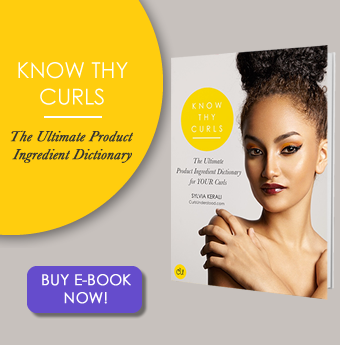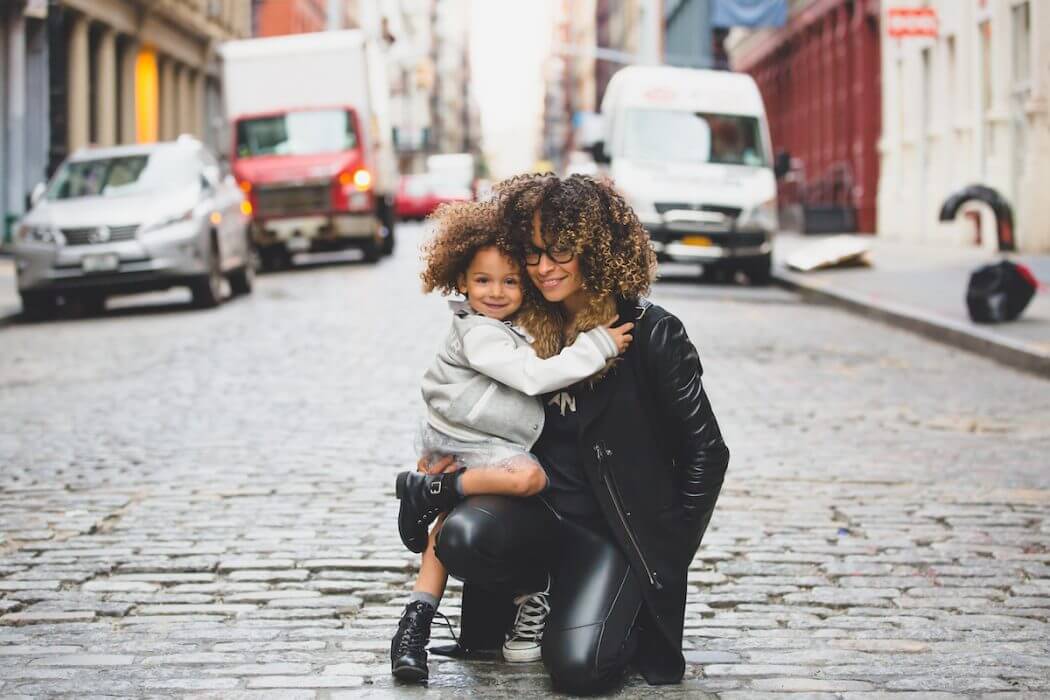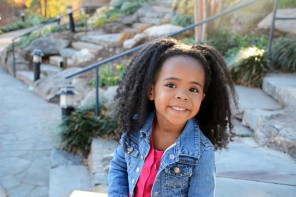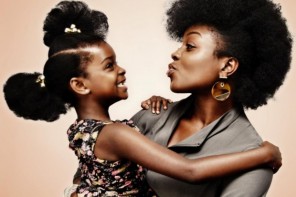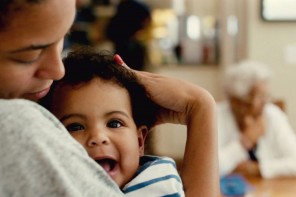At the age of seven, on a visit to see family in Florida, I got my very first relaxer. That was my introduction to losing touch with my natural hair, relying on others to help me look “good” and a general disinterest in being creative with my hair since, let’s face it, why bother when you can leave it loose or put it in a ponytail in 5 seconds flat.
Fast forward about twenty years. I’m a mom of three small children; one boy and two girls. I’m still giving in to the creamy crack every 3-6 months and barrettes are my daughters’ best friend.
Wow, am I glad that those days are behind me. I’ve been rocking my natural hair for going on two years this July. I traded decades of getting relaxers, using rollers, blow-dryers and flat irons for learning how to maintain naturally curly hair for me and my kids.
Why? My daughters. One day they looked at me and begged me to straighten their hair so they could be “pretty” like me. That was the beginning of a journey, not only to get to know my own hair but love it so that, in turn, I could teach my kids to love it too.
It hasn’t been easy and there is still some work to be done (competing with pop media is a constant struggle) but every day my kids are embracing their naturally beautiful, naturally curly, naturally fierce hair.
I’m a mother of three gorgeous children; all with different textured hair. My son is thirteen, and my daughters are eleven and nine. I mention their ages because that plays a role in how much time they’ve had to love their hair as well as the level of hair care that they’re responsible for. That was the first step in getting them to love their hair —giving them a role in taking care of their own hair.
One day my kids looked at me and begged me to straighten their hair so they could be “pretty” like me. That was the beginning of a journey…
It’s important to be intentional in this process. Asking your nine year old to detangle her hair when it’s very knotted and painful to detangle is not going to help her show and feel love. Around the age of seven, I began letting them condition, and eventually, shampoo their hair.
I would give them a section and while they followed my instructions, I commented on how soft their hair felt or how bouncy a curl was, all with an encouraging laugh and genuine positivity. Reinforcing hair maintenance with positive praise has been key in teaching them to love their hair.
In today’s media, the definition of beauty is skewed to the unrealistic masses. It’s a constant battle against social standards that don’t typically align to the reality of my family’s DNA. That is, of course, until I monitor and highlight images of beauty in the media that are representative of my children. This has been the easiest to do with my son, who looks up to football and basketball players. In that case, Latinos and blacks are the majority and easily resemble not only my son’s physical appearance and his hair style but his current aspirations.
However, my daughters currently aspire to become actresses, models, a veterinarian/pediatrician and a photographer; the first two are shared goals. It has been my job to find individuals in the media who can redefine what is beautiful based on how my daughters see themselves and what I want them to value as beautiful. As long as my children have eyes and socialize with friends, the perspective of mainstream beauty and placing a value on beauty is inevitable.
Reinforcing hair maintenance with positive praise has been key in teaching them to love their hair.
However, the extent at which they maintain its importance, what that looks like and their desire to be the change they want to see depends on me. This means guiding their online searches to ensure that they see the models’ rocking natural hair from NYFW; highlighting the success of characters like Dr. Pearce and Dr. Edwards on Grey’s Anatomy; introductions to photographers like Chandra McCormick and Lorna Simpson.
In aligning with the previous tip of personal hair care, buying dolls that look like my daughters and have hair like them, such as the Angelica doll, that they can manage has been helpful as well.
Finally, allowing them to express their personal hair creativity. I am especially conscious of not shaming their desire to wear their hair straight or in ways other than naturally curly. There are some restrictions to their self-expressions, however, such as dying their hair, semi-permanent coloring and, of course, relaxing their hair. These creative liberties allow my girls to appreciate their hair and all the wonderful things that they can do with it.
It has been my job to find individuals in the media who can redefine what is beautiful based on how my daughters see themselves…
They can quickly and easily go from straight to curls — just add water. As with all things, I give my children choices within limitations that I set (ex. bantu knots or flat twist out). At the end of the day, it’s the feeling of having a choice that peaks their interest and helps them appreciate the texture of their hair. Furthermore, they have different hair accessories that add a little spice to every day styles.
They especially like their knick knack headbands and snappee hair ties. My son gets his own hair products and magic twist hair sponge for styling. I’ve also helped him try styles that he’s seen on YouTube.
Overall, teaching my kids to love their hair hasn’t been that difficult. When you make a conscious decision to breathe positivity into something, it naturally becomes a positive experience for your children. As with love in any sense, you have to love it yourself before you can teach someone else.

